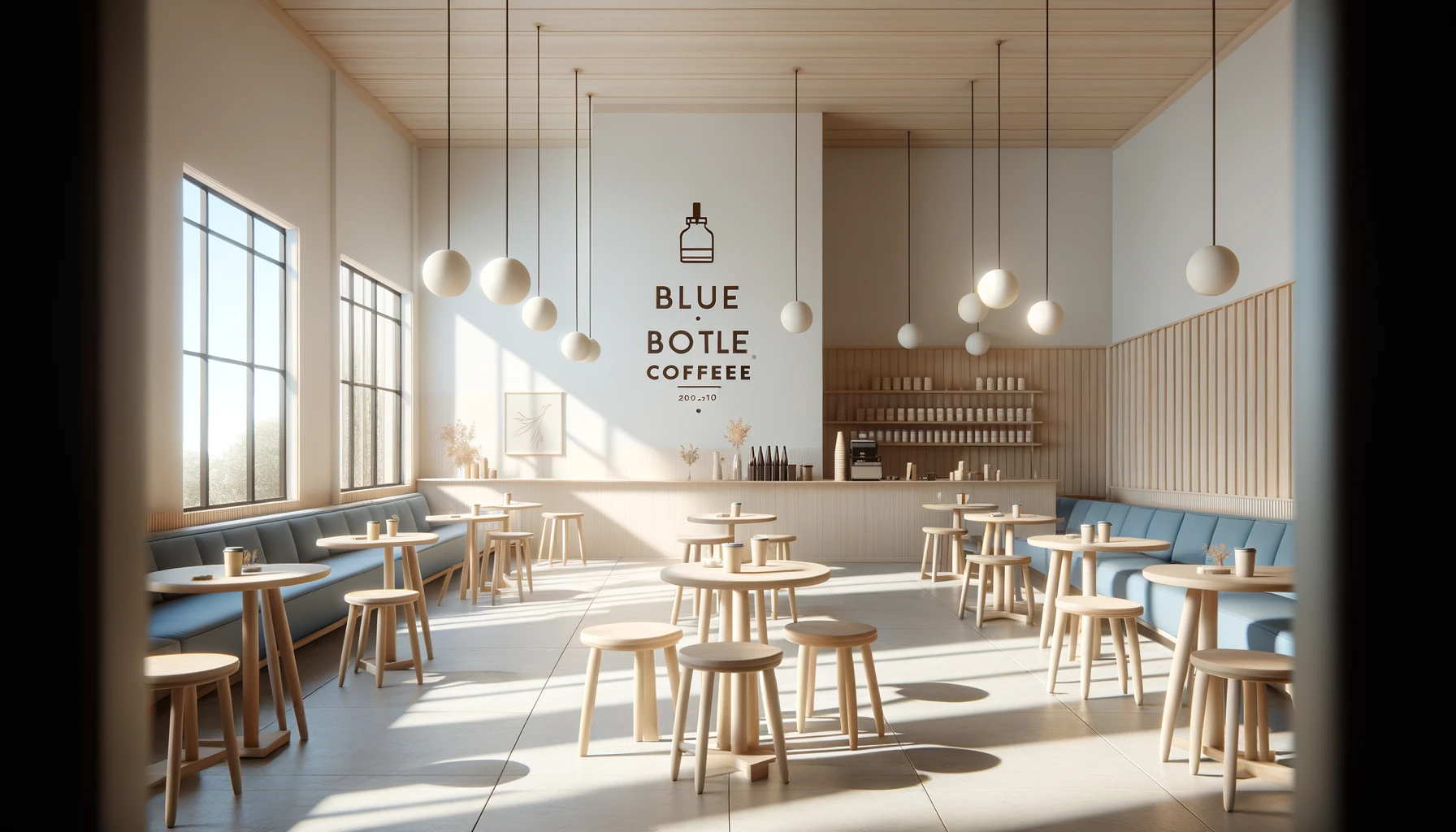Explore the transformative power of minimalist brand design. Learn how design simplicity enhances brand impact, with practical tips for small businesses to implement effective branding strategies. Boost your brand recognition today!
Key Takeaways
- Understand the Essence of Minimalism: Learn what minimalist design truly entails and why it’s more than just aesthetic simplicity—it’s a strategic approach to brand identity that emphasizes clarity and functionality.
- Discover the Benefits: Explore how minimalist branding can enhance your brand recognition, improve customer experience, and even reduce marketing costs by focusing on essential elements.
- Practical Implementation Steps: Gain actionable tips and a step-by-step guide on how to apply minimalist principles to your brand design, ensuring you maintain your brand’s identity while embracing simplicity.
- Real-World Examples: Get inspired by successful case studies from various industries that have effectively implemented minimalist brand design to boost their market presence and customer loyalty.
- Tools and Resources: Learn about the best tools and resources available to help simplify your design process and achieve a minimalist aesthetic that aligns with your business objectives.
Table of Contents
Introduction: The Power of Simplicity in Branding
Have you ever wondered why some brands, with seemingly simple logos and uncluttered designs, manage to capture more attention and loyalty than others cluttered with details? In today’s fast-paced world, where everyone is bombarded with information, simplicity in branding can be your most powerful tool.
Minimalist brand design isn’t just about using fewer colors or elements. It’s about making a stronger impact with less, ensuring your message isn’t lost in the noise. It’s about clarity, efficiency, and the boldness of simplicity. This approach not only makes your brand more recognizable but also more memorable.
Imagine a world where every advertisement, logo, or product design shouts for attention. Now, picture a clear, clean logo that cuts through the chaos, instantly recognizable amidst the noise. That’s the power of minimalist design. It’s not just a style; it’s a strategic tool that can elevate your brand above competitors. This is crucial in a market where customers are increasingly valuing experiences over sheer aesthetics.
In this blog, we will delve into how embracing minimalist principles in your brand design can not only enhance its impact but also streamline operations and connect more deeply with your target audience. We will explore the core principles of minimalist design, its benefits, and practical steps on how you can implement it in your brand strategy. Get ready to transform your business with the art of simplicity!
The Philosophy Behind Minimalist Design
Understanding Minimalism
Minimalism in design is about more than just using fewer colors or elements; it’s a philosophy centered on the idea that less is more. Originating from the minimalist art movement of the 1960s, which focused on stripping everything down to its essential qualities, minimalist design seeks to eliminate all non-essential forms, features, or concepts. In branding, this translates to focusing on what is absolutely necessary to convey your message and identity clearly and directly.
The Core Principles of Minimalist Design
- Simplicity: The heart of minimalist design lies in simplicity. This involves decluttering, using fewer colors, and minimal graphic elements to create a clean and uncluttered visual impact.
- Functionality: Every aspect of a minimalist design should serve a purpose. Unnecessary decorations or elements that do not serve a practical function are removed, prioritizing usability and the user’s experience.
- Emphasis: By stripping away the non-essential, what remains gets more emphasis. This makes the essential elements more powerful and more effective in communication.
- Clarity: With fewer distractions, the message becomes clearer. This clarity helps in communicating the brand’s ethos and message more effectively, ensuring it resonates with the audience.
How Minimalism Translates to Branding
In branding, minimalism isn’t just an aesthetic choice—it’s a reflection of a brand’s values and message. A minimalist brand design can communicate honesty, transparency, and sophistication. It tells the consumer that the brand is confident enough in its products or services that it doesn’t need to rely on over-decoration to attract attention. This can build a stronger trust relationship between the brand and the consumer, as they come to associate the simplicity of design with directness and sincerity.
Next, we’ll look at the tangible benefits that adopting a minimalist approach can bring to your business, from enhancing brand recognition to streamlining customer experience.
Benefits of Minimalist Brand Design
Enhancing Brand Recognition
One of the most significant advantages of minimalist brand design is its ability to enhance brand recognition. Simple and clean designs are easier for customers to remember than complex ones. This memorability means that when customers see your minimalist logo or branding, they’re more likely to recall your brand over competitors with more cluttered visuals. A minimalist design stands out not because it’s loud, but because it’s clear and distinct, making it easier for your brand to become a staple in the minds of your audience.

Streamlining Customer Experience
Minimalist design also plays a crucial role in streamlining the customer experience. By eliminating unnecessary elements, customers are presented with what they need to see and nothing more. This clarity in design extends to user interfaces, product design, and overall customer interaction with the brand. It makes the decision-making process easier for customers because they can quickly understand what you offer, how it benefits them, and why they should choose your brand. A simplified experience can lead to faster conversions and increased customer satisfaction.
Cost Efficiency in Marketing Materials
Adopting a minimalist approach can also lead to cost savings in the production and distribution of marketing materials. With simpler designs, you require fewer resources—less ink, simpler prints, and often less time in the design process. These efficiencies can significantly reduce the costs associated with branding materials such as business cards, brochures, and packaging. Additionally, the timeless nature of minimalist design means that your branding remains relevant for longer, reducing the need for frequent redesigns.
The principles of minimalist design extend far beyond aesthetic choices—they encapsulate a broader approach that can significantly impact various aspects of a business. Next, we will explore how you can implement these principles into your own branding strategy to leverage these benefits fully.
Implementing Minimalist Design in Your Brand
Step-by-Step Guide to Minimalist Design
Implementing minimalist design in your brand can seem daunting at first, especially if you are used to more traditional or complex visuals. However, by following these steps, you can effectively simplify your brand’s design while maintaining its essence and impact.
- Audit Your Current Branding: Start by reviewing your existing branding materials. Identify elements that are non-essential or that clutter your message. This could include excessive colors, fonts, or any decorative graphics that do not add functional value.
- Define Your Core Message: Clearly define what your brand stands for and the key message you want to communicate. This clarity will guide you in deciding what elements are essential to your brand’s design.
- Simplify Your Color Scheme: Choose a color palette that reflects your brand’s message with as few colors as possible. Typically, minimalist designs use one to three colors. These should be distinctive, align with your brand values, and be versatile across various media.
- Opt for Clean Typography: Typography in minimalist design should be simple and legible. Choose one or two fonts at most. Make sure they complement each other well and are easy to read across different sizes and mediums.
- Focus on Space: Use space effectively to highlight the most important elements of your design. Proper use of white space, or negative space, not only adds to the aesthetic value but also improves readability and customer focus.
- Iterate and Get Feedback: Once you have a new minimalist design, test it with your target audience. Collect feedback and make adjustments as necessary. It’s important to ensure that while the design is simple, it still effectively communicates your brand’s message and appeals to your customers.
Balancing Minimalism with Brand Identity
It’s crucial not to lose your brand’s identity in the pursuit of minimalism. The key is balance—ensuring that the essential elements that define your brand are not stripped away. Maintain distinctive features that connect customers to your brand emotionally and intellectually.
Tools and Resources for Design Simplification
Several tools can help you achieve a minimalist design, from graphic design software like Adobe Illustrator and Canva to UI design tools like Sketch and Figma. Utilize these resources to experiment with different layouts, typography, and color schemes until you find the perfect minimalist design for your brand.
Implementing minimalist design requires thoughtful reduction and careful attention to what truly matters about your brand. The next section will showcase real-life success stories of brands that have effectively utilized minimalist design to transform and grow their businesses.
Case Studies: Success Stories of Minimalist Brands
Technology Sector Example: Apple
Apple is perhaps the quintessential example of minimalist brand design done right. The company’s logo, product design, and overall aesthetic embody the principles of minimalism—simplicity, clarity, and functionality. Apple’s branding focuses on clean lines and a monochrome color palette, which not only makes their products instantly recognizable but also communicates the brand’s commitment to quality and modernity. This approach has helped Apple create a strong brand identity that resonates with consumers worldwide, emphasizing the value of their products without the need for excessive embellishments.
Fashion Industry Example: Everlane
In the fashion industry, Everlane stands out for its minimalist approach to both branding and product design. The brand uses a very simple logo and maintains a neutral color scheme across all its marketing materials. This not only helps in creating a cohesive look but also aligns with their ethical approach to fashion—transparency and quality over quantity. Everlane’s straightforward, no-frills presentation of clothing appeals to consumers looking for durable, timeless pieces, illustrating how minimalism can also reflect a brand’s values and mission.
Food and Beverage Industry Example: Blue Bottle Coffee
Blue Bottle Coffee uses minimalist design effectively to enhance its brand’s appeal. The company’s packaging is straightforward, featuring clean typography and plenty of white space, which draws attention to the quality and origin of the coffee. This minimalist approach extends to their cafes, which are often open spaces with a focus on natural lighting and minimal decor. This design philosophy not only highlights their product but also creates a calming environment that enhances the customer experience.

These case studies demonstrate that minimalist design can be effectively applied across different sectors, each leveraging simplicity to amplify their brand’s message and connect deeply with their target audience. By focusing on essential elements and stripping away the unnecessary, these brands have successfully differentiated themselves in competitive markets.
Embracing minimalist design can lead to a clearer brand identity, improved customer experiences, and increased recognition. As we wrap up, we’ll reflect on how your business can apply these insights to harness the power of minimalism for maximum impact.
Conclusion: Embracing Minimalism for Maximum Impact
In the journey through minimalist brand design, we’ve uncovered how simplicity isn’t just a stylistic choice—it’s a strategic tool that can significantly elevate a brand’s presence and connect more deeply with consumers. By focusing on the essentials, minimalist design cuts through the clutter of the marketplace, delivering clear, direct messages that resonate more effectively with audiences.
The Strategic Advantage of Minimalism
Minimalist design offers a competitive edge by making brands more recognizable and easier to recall. This design philosophy champions the ‘less is more’ approach, enhancing brand identity and customer loyalty through simplicity and clarity. As seen in the case studies of Apple, Everlane, and Blue Bottle Coffee, minimalism can transform a brand’s image and consumer perception, proving that a simplified approach can lead to amplified results.
Building a Lasting Connection
Moreover, minimalist design fosters a stronger emotional connection with customers. It speaks of confidence and transparency, qualities highly valued in today’s market. Customers gravitate towards brands that offer clarity and honesty, and minimalist branding communicates these values effectively.
Sustainable and Cost-Effective
From a practical standpoint, minimalist design is not only aesthetically pleasing but also cost-efficient. It reduces production costs by limiting materials and simplifies marketing strategies, which can lead to broader, more effective consumer engagement with fewer resources.
Your Minimalist Journey
Now is the perfect time for your brand to embrace minimalism. Start by evaluating your current design and identifying elements that don’t serve a functional purpose. Simplify your color palette, streamline your typography, and focus on the core components that make your brand unique. Remember, the goal is to enhance your brand’s message, not dilute it. Minimalism should be a reflection of your brand’s strength and confidence—a clear beacon in a sea of complexity.
As you consider integrating minimalist principles into your brand strategy, think of the broader implications: a brand that is not only visually appealing but also profoundly aligned with the values of simplicity, functionality, and authenticity. Let your brand be one that stands out for its clarity and straightforwardness, making a lasting impression on your market.
Call to Action
Are you ready to transform your brand with minimalist design? Share your thoughts, experiences, or plans about adopting a minimalist approach in branding. Let’s discuss how simplicity can redefine the future of your business. Dive deeper into design simplicity and see how it can make a significant impact on your brand.
FAQs
What is minimalist brand design?
Minimalist brand design is a strategic approach that focuses on simplicity and functionality. It involves stripping down the design to its essential elements—removing all unnecessary details to highlight what truly matters. This design philosophy emphasizes clean lines, uncluttered aesthetics, and a limited color palette to enhance brand recognition and clarity.
Why choose minimalism for my brand?
Choosing minimalism for your brand can help clarify your message, make your brand more memorable, and improve customer experience. It reflects confidence and honesty, attracting customers who value transparency and simplicity. Additionally, minimalist design can be more cost-effective, requiring fewer resources for production and maintenance.
How does minimalism affect consumer perception?
Minimalism can positively affect consumer perception by making the brand seem more organized, efficient, and straightforward. This clarity and ease of understanding facilitate a quicker and stronger emotional connection with the brand, often translating into higher trust and loyalty.
Can minimalism work for any business sector?
Yes, minimalism can work effectively across all business sectors, from technology and fashion to food and services. The key is to understand how to apply minimalist principles in a way that complements the brand’s core values and customer expectations without losing its distinctive character.
How to start transitioning to a minimalist design?
To start transitioning to a minimalist design, begin with an audit of your current branding to identify and eliminate unnecessary elements. Simplify your color scheme and typography, focus on essential features, and ensure every aspect of your design has a functional purpose. It’s also beneficial to seek feedback during the transition to ensure that your new minimalist design resonates well with your target audience.
By addressing these common questions, you can provide valuable insights to your readers, helping them understand and appreciate the benefits of minimalist brand design while guiding them on how to effectively implement it in their own business strategies.
